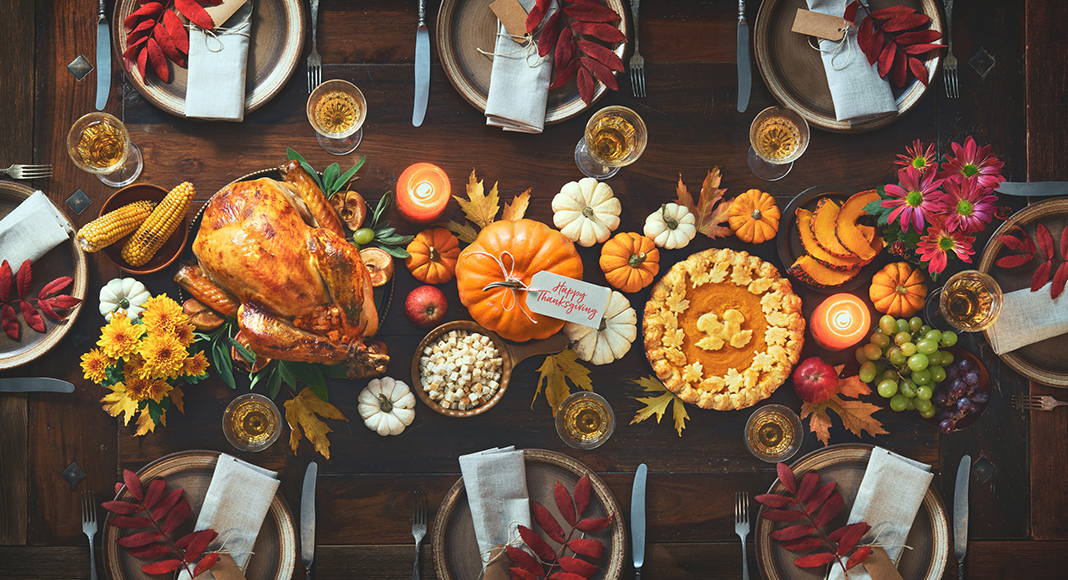Thanksgiving is typically a holiday when many families travel long distances to celebrate together. In 2019, the AAA highlighted that more than 55 million travelers planned to start the holiday season with a trip of 50 miles or more away from home.
This year, as a result of the COVID-19 pandemic, many families may choose to stay home, or may be restricted from traveling due to local restrictions.
If you choose to travel, here are eDrivingâs ten tips for a safe and happy Thanksgiving 2020:
- Adhere to COVID-19 restrictions and guidance
Adhere to national and local travel restrictions and safety guidance. The CDC advises that travel increases the chance of getting and spreading the virus, and that staying home is the best way to protect yourself and others. If you must travel, be informed of the risks involved and check the COVID-19 Travel Restrictions Map from AAA.
- Prepare your vehicle
Do this in advance so you can act if necessary. Check fluid levels, fuel, lights, tire pressures, tire condition, brakes, battery and wiper blades. Consult a professional if youâre unsure how to carry out the checks. Pack an emergency kit that includes a blanket, deicer, water, non-perishable food, car charger for your phone, warning triangle, basic first-aid kit and flashlight.
- Set a travel schedule
Avoid traveling during peak times if you can, for both your outbound and return trip. Check weather forecasts and travel updates before you leave. Put off traveling if conditions are bad. Let friends/ family know your travel plans and ETA.
- Load the vehicle with care
Avoid overloading your vehicle as doing so can affect its suspension, handling and braking capabilities. Maximum weight limits should be displayed on a sticker inside the driverâs door or in your ownerâs manual. Ensure no items are in the driverâs footwell as they can cause an obstruction. Be aware that items in the rear footwell could slide forward while the vehicle is in motion. Itâs also recommended that you properly store items so that they canât be projected forward in the event of a collision.
- Minimize distractions
Put your phone away before you set off to avoid the temptation to look at it while driving, or give it to a fellow passenger for them to receive calls/ texts for you. Set up GPS before starting your trip and avoid eating and drinking during the drive. Itâs a good idea to explain to passengers before you set off the importance of allowing you to concentrate on the road. Consider packing some quiet activities to occupy younger passengers, such as books, game consoles, tablets or DVD players (with headphones). Read more â Best Practice: Distracted Driving
- Set off well-rested
Driving while tired affects driving ability in the same way as drinking alcohol; it reduces reaction times and affects concentration and coordination. Allow plenty of time for a good nightâs sleep before you set off â and take regular breaks from driving â at least 15 minutes every two hours. Read more â Best Practice: Fatigue
- Buckle up
Ensure all passengers are wearing a seat belt before you set off. Also, ensure children are seated in appropriate seats â check requirements here.
- Stick to a safe speed
Speeding reduces your reaction time in an emergency and increases the force of a collision. Travel at a speed that enables you to safely stop in the distance you can see to be clear, and remember that a three-second following distance is for good conditions only. Increase this in wet conditions or if visibility is reduced. Read more â Best Practice: Speeding
- Look out for others
Watch out for other road users, including vulnerable road users such as cyclists, motorcyclists and pedestrians. And donât forget larger vehicles, including trucks. Take steps to let truckers know youâre passing them â this includes keeping your turn signal on for longer than normal and making 100 percent sure a truck is clear of your vehicle before changing lanes. Read more â Best Practice: Sharing the Road
- Avoid impairment
Donât drive at all if youâve consumed any alcohol. Keep the âmorning-after effectâ in mind while celebrating over the holiday period. And look out for friends and colleagues too. If you know someone has been drinking, donât let them drive. Call them a taxi, arrange a lift with a sober friend or encourage them to stay over for the night.
Visit eDrivingâs COVID-19 Resource Center for coronavirus-related news, guidance and resources.
Have a safe, happy Thanksgiving!



















